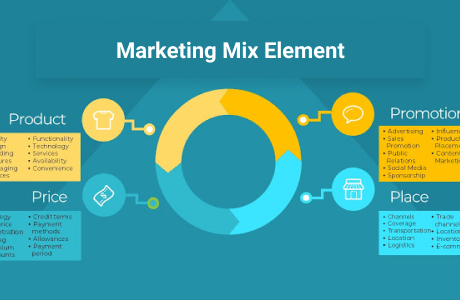Do you know how a company just knows what you want? They collect a few surveys, and suddenly they know more about your requirements than you! Is it all automated? Short answer, no!
Someone is sitting and analyzing every behavioral data of a consumer to create profiles. They are called market research analysts!
Are you just fascinated with the idea of a market research analyst? Or someone who is planning to become one?
This is how you can become a market research analyst –
Let’s begin with understanding who a market research analyst is.
What Is A Market Research Analyst?

Market research analysts are the strategic brains behind a company’s marketing decisions. Their job is to gather data on consumers and competitors and then use that information to guide business strategies.
Whether a company is launching a new product or planning a marketing campaign, market research analysts are the ones who determine the best approach. They don’t just guess; they rely on cold, hard data.
What Do They Do?

A market research analyst’s role involves several core responsibilities. Why don’t we go through them to know the responsibilities a little better?
Data Collection: Gathering data is the starting point of any market analyst. This could be through surveys, interviews, focus groups, or analysis of existing market data.
Trend Analysis: After gathering the data, they identify patterns and trends that provide insights into market behavior. For example, what products are gaining popularity, or which consumer needs are currently unmet? How can the company they work for help meet them?
Market Forecasting: Analysts will often predict future market trends. However, this is not just through guessing. However, when a company plans to launch a product next year, these professionals will forecast whether the market will be favorable or not.
Furthermore, they also inform about whether the product will launch in the right direction and be liked by the audience you are targeting.
Consumer Segmentation: By analyzing consumer data, they segment the market into groups based on behavior, preferences, or demographics.
Reporting and Presentations: Then, they communicate their findings to decision-makers through reports, presentations, and visual data displays.
Competitor Analysis: Understanding competitors’ moves and strategies is key. Market research analysts monitor what competitors are doing and how they’re positioning themselves in the market.
What Degrees Do You Need To Get?

There isn’t one fixed path to becoming a market research analyst, but certain degrees, and conceptual skills can give you a strong foundation:
Bachelor’s Degree: A degree in marketing, business, economics, or statistics is often the starting point. Subjects like research methods, consumer behavior, and data analysis are crucial.
Advanced Degrees: Unfortunately, just a bachelor’s degree wouldn’t do for more senior roles. Therefore, a master’s degree in market research, data science, or business analytics can be advantageous. An MBA is also beneficial if you’re aiming for leadership positions.
Your educational qualifications should focus on building a mix of analytical, research, and communication skills, as these are the backbone of a successful career in this field.
Later you can also upskill by becoming a data scientist, and it can open more doors for you.
Tools You Will Need To Learn

As a market research analyst, you’ll need to know the art of upskilling. You can do so with various tools and software that streamline your work:
Data Analysis Software: Tools like SPSS and Python are complex tools. Mastering them might take you years. However, you should still try to master it because it is great for running statistical analysis and handling large datasets.
Survey Platforms: Software like Qualtrics, SurveyMonkey, and Google Forms help design and analyze surveys.
CRM Tools: Understanding tools like Salesforce and HubSpot are essential for tracking customer data and trends. This ensures that market research analysts do not depend on guesswork.
Data Visualization Tools: Tableau, Power BI, and Google Data Studio are crucial for presenting data in a visually engaging way.
Competitive Analysis Tools: SEMrush, SimilarWeb, and BuzzSumo provide insights into your competitors’ strategies and their market performance. After all, you will need to know what others are doing for their customers. That is always a sign of a good market research analyst.
Mastering these tools will enhance your efficiency and make your work more impactful.
Life Of A Day Of A Market Research Analyst

What does a typical workday look like for A Market Research Analyst?
We will go through it step by step to have a better idea of their role as a Market Research Analyst.
1. Morning: Data Collection And Initial Analysis
The day often begins with reviewing the latest data from surveys, focus groups, or market reports.
Analysts spend the early hours gathering information that will guide their day’s analysis.
2. Midday: Deep Dive Into Analysis
The core part of their job kicks in around midday. This is when they run statistical models, crunch numbers, and identify key insights.
Meetings with product teams or marketing departments often happen around this time to discuss early findings.
3. Afternoon: Reporting And Strategy Discussions
After the analysis, it’s time to translate data into actionable strategies. Analysts prepare detailed reports highlighting key trends and recommendations.
Then, they might deliver a few presentations to senior management to guide their decision-making.
4. Late Afternoon: Market Monitoring And Competitor Analysis
Keeping a pulse on market trends and competitors is crucial.
Analysts usually allocate some time in the late afternoon to social media updates, reviewing industry news, and studying competitors’ moves.
5. End-of-the-Day Planning And Strategy Tweet
Before wrapping up, their main job is to refine strategies based on the latest social media insights and plan for the next day’s tasks.
After all, without understanding whether your current plan is working or not.
The final work would involve technical analytics, strategic thinking, and effective communication, which would also include talking to their team.
How To Get A Job As A Market Research Analyst

Getting your foot in the door as a market research analyst requires more than just the right degree.
Here’s a practical guide:
Start with Internships: Right after you have finished your bachelor’s degree, many companies offer internships in market research, allowing you to gain real-world experience while studying.
Create a Portfolio: Build a collection of your best work. Whether from academic projects, freelance jobs, or case studies. A strong portfolio can showcase your analytical and research skills.
Get Certified: Professional certifications, such as the Professional Researcher Certification (PRC) or Google’s Data Analytics Certification, can give you an edge.
Network Actively: Next, join industry groups, attend webinars, or engage in professional forums. Networking can open doors to job opportunities and keep you updated on industry trends.
Tailor Your Applications: When applying for jobs, customize your CV and cover letter for each position. Highlight skills like data analysis, research methodologies, and strategic thinking.
Best Career Options & The Potential Salary

The field offers diverse career paths. Depending on your interests, you might specialize as:
Consumer Insights Analyst: Focus on understanding consumer behavior and preferences.
Product Research Analyst: Specializes in product development and testing.
Brand Analyst: Concentrate on evaluating brand performance and strategy.
Competitive Intelligence Analyst: Monitor competitors and track industry trends.
When it comes to salaries, market research analysts can get a reasonably good salary, provided you have the skills to back it up. Especially when your analysis begins to work for a company and starts bringing in a lot of profit.
Entry-level positions typically offer between £25,000 to £35,000 annually. With experience, salaries rise to £50,000 or more.
For those in specialized roles or with advanced degrees, six-figure jobs are not uncommon.
Final Note!
The path to becoming a market research analyst combines curiosity, a knack for numbers, and strategic thinking. It’s about more than just crunching data; it’s about turning data into insights that drive real business results.
Whether you’re just starting out or looking to advance in this field, there are plenty of opportunities for growth and impact in the business world.
Especially with the advent of digital marketing, you will have enough opportunities in terms of SEO, and website data analysis.
So, are you ready to dive into this world where data meets strategy?
You could be the one predicting market trends and helping businesses shape their futures.
Read Also:





















